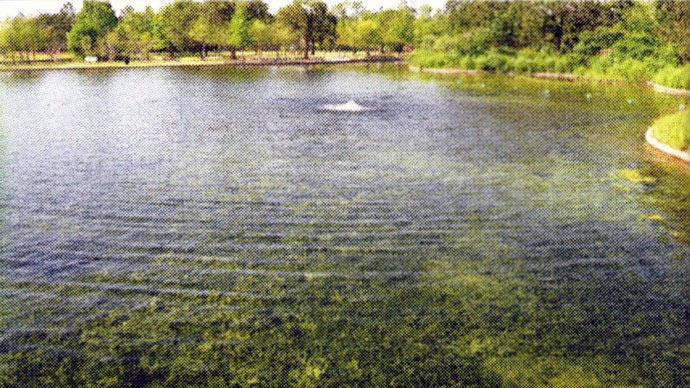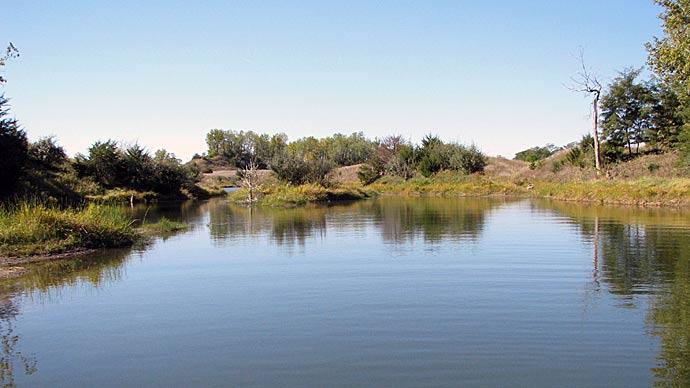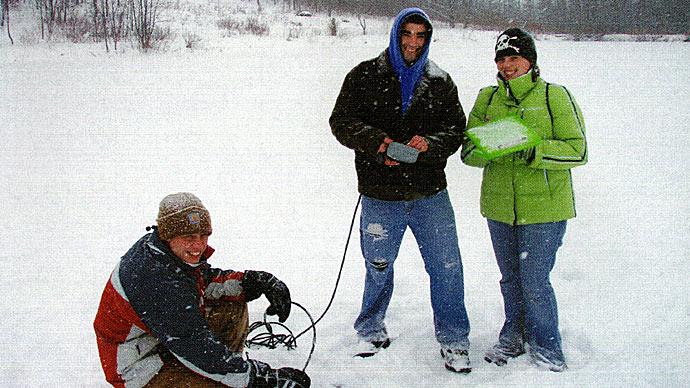
Small ponds live life similar to their larger cousins, only magnified. Water quality can deteriorate much more quickly, temperatures rise and fall faster than larger, deeper lakes and ponds. With that thought in mind, always remember. "Water is as water does." Forrest Gump's cousin. Gabby, said that.
Water is the medium. Everything that can dissolve into water, will. Remember that. For example, say your pond bottom soils have lots of limestone and iron. Both those minerals will dissolve into water, until saturated. Tree leaves fall into the water. You have stirred those shallow soils, and seen the black, mucky, stinky junk boil to the surface. Smells like rotten eggs. Water is slowly processing organic matter, allowing it to decompose and break down to the fundamental nutrients which make it up. Those nutrients are reused, maybe as aquatic plants, maybe as plankton...or maybe simply stored in silly, gooey mud, to be used later.
As resilient as water is, don't be lulled into thinking it will respond as you wish. Water has natural limits. Push those limits and nature pushes back. Since water is the medium, don't blame the wet stuff when things go wrong.
Think about it this way...different nutrients, minerals and metals dissolved into water will always be a stimulus for a natural reaction. Always. Add sunlight and temperature to water loaded with nutrients, and something will grow. If we manage things properly, nutrients and their mineral cousins lend themselves to the genesis of a food web. That is, nutrients feed microscopic plants which feed microscopic insects which feed larger organisms, on up the food chain to the top, predators such as fish.
But, if one link of the food chain is pressured, the rest of the chain responds. For example, add too many filter feeder critters into a system, and zooplankton drops. Then, big algal blooms take over and the rest of the food chain suffers. Add too many predators at the top, and the middle of the food chain disappears.
Okay, enough of the biology stuff. What does it all mean to you?
The older a pond grows, the more attention it typically needs. Keep your mini-pond young by moving the water. Keep the water moving, and you expedite all the natural processes we hope are occurring.
How do you move water? Several ways. The least expensive artificial way is to aerate. Create vertical currents, top to bottom. Use low pressure, high volume aeration systems to expose as much pond water to air as possible. Contacting water with air speeds things immensely.
Another way is to move the water. It's common to see mini-ponds with electric pumps drawing water from the deepest areas, pushing it uphill into a wetlands-style bog, descending to a small scenic waterfall, splashing into the pond. Creating a natural filtering system through a bog allows landscaping plants to cleanse the water as it moves back home. Ponds as these allow the manager to push the envelope of fish production while enjoying the ambience of clean, fresh water.
Moving water allows Nature to do what it does best, clean house.
Reprinted with permission from Pond Boss Magazine



